Post-Tensioned Cantilever Segmental Bridges
Concept and Known Issues
The West Seattle Bridge was considered an exemplar post-tensioned cantilever segmental bridge when it was built in 1984. Like most post-tensioned segmental bridges, the main span of the West Seattle Bridge is a trapezoidal hollow box cross-section, made of concrete, reinforced with typical steel “rebar” as well as high-strength post-tensioning steel strands (Figure 1). In this case, the hollow box is about 12 feet deep at mid-span (i.e. over the middle of the Duwamish River) and 24 feet wide at that location. The box is much larger over the abutment supports. The 590-foot main “central” span utilizes an arch, with the middle 250 feet built 140 feet above the surface of the Duwamish River below, permitting large ships to pass underneath1.
Cantilever refers to the design of the bridge. This type of bridge is not actually required to be continous at mid-span over the middle of the Duwamish River.
In the photo in Figure 1, the bridge trapezoidal hollow box cantilevered free-end was visible while it was under construction. It is evident from that photo that the bridge is self-supporting / ”balanced” without any continuity needed at the middle of the main central span, except for the road surface.
Figure 1: Screenshot from Bridge.watch showing the West Seattle Bridge. The hollow trapezoidal shape of the main span girder cross-section crossing the Duwamish River can be seen in the construction photo (bottom). This main span is actually the span in the distance in the top figure photo that was taken in September 2021 by the author. showing the West Seattle Bridge. The hollow trapezoidal shape of the main span girder cross-section crossing the Duwamish River can be seen in the construction photo (bottom). This main span is actually the span in the distance in the top figure photo that was taken in September 2021 by the author. Figure 1. West Seattle Bridge](/static/536620d3bdf99c6a120810550fceba56/d72eb/WestSeattleBridge.png)
Segmental refers to the original construction sequencing of the bridge, which was built in segments. In the case of a post-tensioned bridge, each concrete box segment (including typical steel “rebar” reinforcement) was cast with hollow plastic ducts installed within the walls of the box. Then, high-strength steel post-tensioning strands were threaded into the ducts, connecting multiple segments together. By then tensioning the steel strands using hydraulic jacks, each new concrete segment would compress against the previously-built segments. The post-tensioning steel would therefore eliminate any tension within the concrete itself. This is conceptually shown in Figure 2.
Figure 2: Concrete is much stronger in compression than tension. This diagram shows (general concept only) that steel post-tensioning of a concrete beam under bending loads can keep the concrete entirely under compression. Ordinarily, without steel post-tensioning, a concrete beam under bending loads would experience a combination of tension and compression.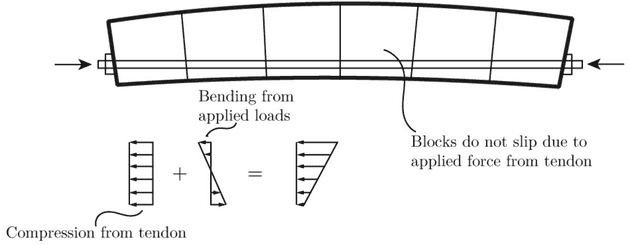
Over time, concrete naturally “shrinks” (deformation related to temperature that is unrelated to any other applied load) and “creeps” (deformation under constant applied load). The steel post-tensioning strands also tend to slightly relax over time (lose some of their stress) due to intrinsic relaxation properties of steel as a material.
All of these phenomena cause the bridge main span to deflect over time in a manner that can be challenging to predict. These potential concrete tension cracks from this extra deflection would typically be predicted by the bridge design engineers of record and prevented by incorporating extra post-tensioning forces during the original construction.
The Koror–Babeldaob Bridge in the Republic of Palau was built in 1977 and collapsed in 1996. It is the same type of bridge as the West Seattle Bridge (post-tensioned cantilever segmental arch) and in fact utilizes a 12-feet deep trapezoidal hollow box at mid-span2, just like the West Seattle Bridge. Although there is some debate about the exact mechanism3 that caused excessive deflections of the 1977 Koror–Babeldaob Bridge, engineers from the 1990s as well as those who have analyzed the Palau bridge using relatively recent methods of analysis agree that unexpected creep and shrinkage were likely the main contributor to the excessive deflections456.
The excessive deflections of the Koror–Babeldaob Bridge identified circa 1990 were corrected using a retrofit that involved adding post-tensioning across the two cantilevers that form the central span, which was not contemplated in the original design. The Koror–Babeldaob Bridge ultimately collapsed less than a year after the retrofit, at a time when there was fortunately no notable traffic. The collapse killed two people.
West Seattle Bridge
Background, Closure, Timeline, and Repair Cost Estimate
The West Seattle Bridge is a post-tensioned cantilevered segmental bridge in King County, Washington built in 1984 that spans over the Duwamish River, connecting the island of West Seattle to the Seattle mainland. In 2016, the bridge had an average daily traffic volume of 108,179 vehicles/day, which is greater than the current median daily traffic volume per bridge in King County of 17,661 vehicles/day (Figure 3) and also greater than the national median daily traffic volume per bridge of 1,694 vehicles/day (Figure 4). Suffice to say, the West Seattle Bridge is of critical importance to Seattle.
Figure 3: Screenshot from https://bridge.watch/state with median King County daily traffic volume (per bridge) indicated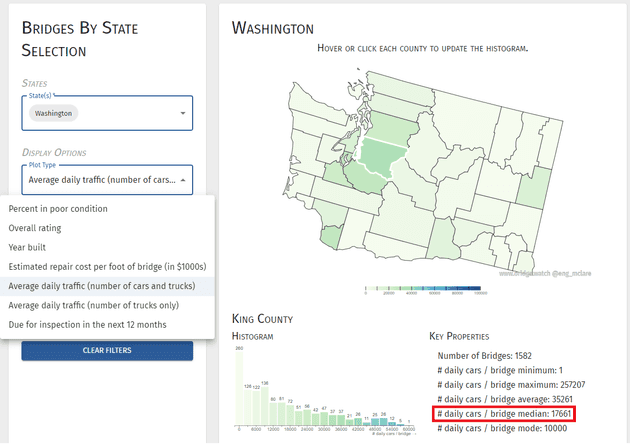
Figure 4: Screenshot from https://bridge.watch with median U.S. daily traffic volume (per bridge) indicated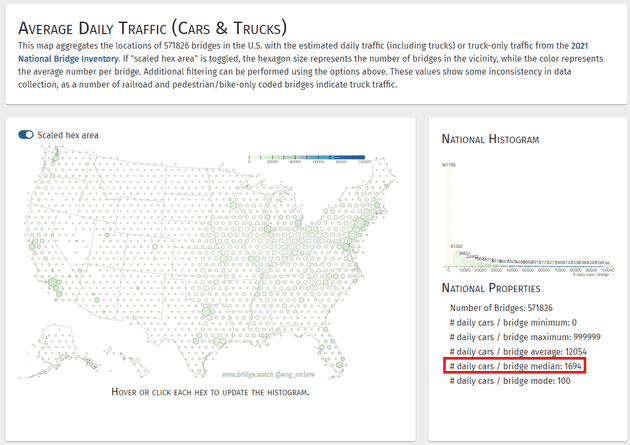
The West Seattle Bridge was inspected between May and August every year since 2013. The superstructure was rated a “7” (“good” condition) in 2013. In 2014, the West Seattle Bridge was downgraded to a “5” (“fair” condition). In 2020, the bridge was downgraded to a “2” (“critical” condition), where it remains at the time of this writing (December 2021). For reference, the current median rating for bridges in King County is a “6” (“satisfactory” condition) and the current median rating for all U.S. bridges is also a “6” (Figure 5, Figure 6).
Figure 5: Screenshot from https://bridge.watch/state with median King County bridge rating indicated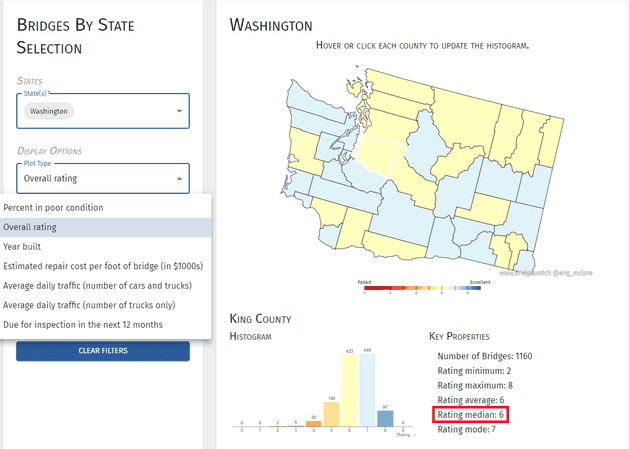
Figure 6: Screenshot from https://bridge.watch with median U.S. bridge rating indicated
Prior to 2015, the FHWA Database does not contain information with the level of fidelity that exists in the FHWA Database post-2015. It is unfortunately not clear why the rating was reduced from a “7” to a “5” in 2014.
In March 2020, the bridge was closed due to the discovery of substantial cracks in the 590-foot central span of the concrete superstructure7. A structural engineering forensics and design consultant, WSP, was hired, along with the construction contractor, Kraemer8. According to Seattle Times articles dated early 2021, the bridge is scheduled to have repairs completed by mid-2022 at a construction cost of $175 million, which includes emergency stabilization work (completed December 2020), 2021-2022 repair work with an estimated construction cost of $47 million9, and road-detour and other unspecified associated costs10.
According to the 2021 FHWA National Bridge Database, last updated in May 2021, the predicted repair construction cost of the West Seattle Bridge was $43,000 per foot (Figure 7) over a total repair span of 1,340 feet. This equates to a total construction cost of $57.6M, which is somewhat larger than the $47M stated in the Seattle Times, perhaps because the FHWA Database also includes the construction cost of the 2020 emergency stabilization repairs.
Figure 7: Screenshot from https://bridge.watch with West Seattle Bridge repair cost indicated
The 2020 emergency stabilization work involved adding substantial post-tensioning across the two cantilevers that form the central span (see Figure 8), which was not contemplated in the original design. A video of this post-tensioning is publicly available11. As of the time of this writing (December 2021), the bridge remains closed. The bridge is scheduled to open back up to traffic mid-2022 and it has been stated12 that the repair will last 40 years.
Figure 8: West Seattle Bridge Retrofit Strategy. New tendons bridging across the center span are indicated in fluorescent green.
Bridge Ratings
Prestressed Concrete Box Girders
Bazant et al13 compiled measured deflection data from 56 bridge spans of the same type as the West Seattle Bridge (long-span segmental prestressed girders, mostly of the cantilevered variety) from bridges in countries outside of the Americas. Of these 56 spans, which range from 200 feet to 1,100 feet, 50 of the spans reportedly exceed or are on track to exceed the maximum deflection limit set by the American Association of State Highway and Transportation Officials (AASHTO)13. This is concerning, since such large deflections were not predicted by the original engineers who designed those bridges. Most likely, the amount of prestressing steel originally placed in those bridges was simply insufficient to meet the AASHTO design criteria. This doesn’t necessarily mean those bridges are unsafe. However, they should be carefully monitored.
There are approximately 1,100 long-span (over 200-feet) bridges in the U.S. of similar type (Figure 8) to the West Seattle Bridge (prestressed concrete box girder/segmental box girder) that are also of similar vintage (pre-2000). The database does not specify whether the designs are a cantilevers. Not including the West Seattle Bridge, 14 of these 1,100 bridges have so far been identified as having a “poor” rating (i.e. a rating of 0, 1, 2, 3, or 4), with 11 of those 14 having the distress located in the superstructure or deck (as opposed to the foundation). Figure 9 shows the locations of these 11 bridges on a map of the U.S., while Figure 10 and Figure 11 show graphical illustrations14, arranged according to the condition of the bridges and according to whether the condition was assessed for the deck, superstructure, or foundation (“substructure”).
Among the eleven long-span prestressed segmental bridges that are in poor condition, the average daily traffic is 23,250 vehicles/day (per bridge). Only six of the eleven bridges have a repair cost listed. The average repair cost is $14,000/ft. None of this data includes the West Seattle Bridge.
Figure 8: Screenshot from https://bridge.watch with total number of U.S. bridges of similar type to West Seattle Bridge indicated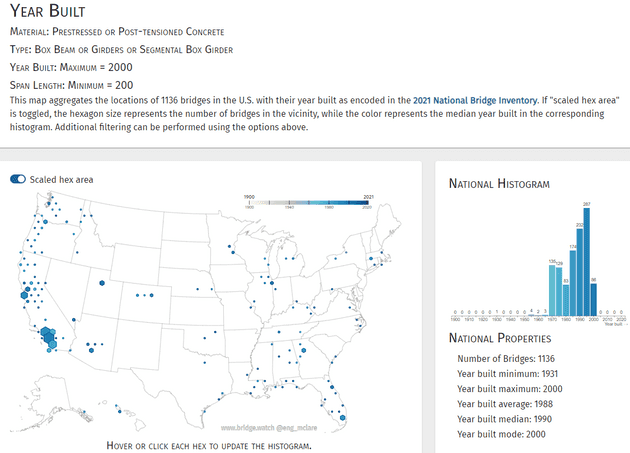
Figure 9: Screenshot from https://bridge.watch with total number of U.S. bridges of similar type to West Seattle Bridge with a poor rating indicated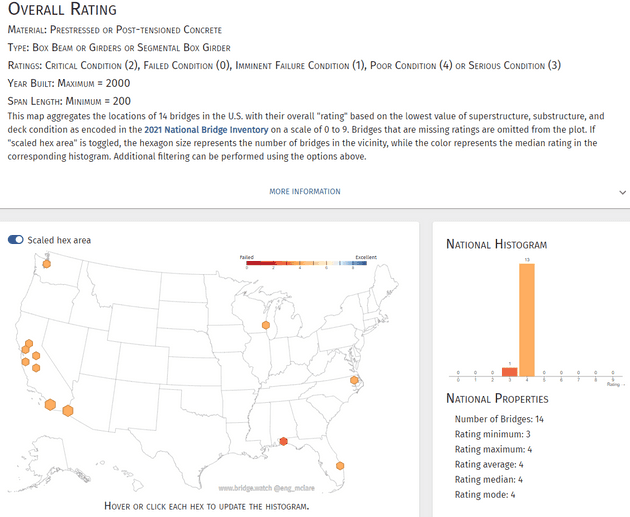
Figure 10: Screenshot from https://bridge.watch with total number of U.S. bridges of similar type to West Seattle Bridge
Figure 11: Screenshot from https://bridge.watch with total number of U.S. bridges of similar type to West Seattle Bridge that have a poor rating
- Ching, K. Yu. “Segmental Box Girders for the High Level West Seattle Bridge.” PCI Journal, July/August 1984. Figure 2 and Figure 3.↩
- McDonald, Brian, Vijay Saraf, and Bernard Ross. “A spectacular collapse: Koror-babeldaob(Palau) balanced cantilever prestressed, post-tensioned bridge.” Indian concrete journal 77.3 (2004): 955-962. Pg. 956 states 12 ft deep at mid-span.↩
- The conclusions written by most of the structural engineering Experts directly involved in the Palau bridge retrofit and collapse investigations are not publically available↩
- McDonald, Brian, Vijay Saraf, and Bernard Ross. “A spectacular collapse: Koror-babeldaob(Palau) balanced cantilever prestressed, post-tensioned bridge.” Indian concrete journal 77.3 (2004): 955-962. Pg. 957 and pg. 961 state that the Japan Internation Cooperation Agency as well as Exponent Failure Analysis Associates, USA took samples from the bridge and measured “low elastic modulus” not considered by the original engineer.↩
- Bažant, Zdene P., Mija H. Hubler, and Qiang Yu. “Pervasiveness of excessive segmental bridge deflections: Wake-up call for creep.” ACI Structural Journal 108.6 (2011): 766. Pg. 771 mentions the importance of accurate “age-adjusted effective modulus” on long-term deflections.↩
- Bažant, Zdene P., Qiang Yu, and Guang-Hua Li. “Excessive long-time deflections of prestressed box girders. II: Numerical analysis and lessons learned.” Journal of Structural Engineering 138.6 (2012): 687-696.↩
- https://www.seattletimes.com/seattle-news/transportation/optimism-grows-in-ability-to-fix-west-seattle-bridge-for-another-15-plus-years-of-traffic/↩
- https://sdotblog.seattle.gov/2021/01/22/the-west-seattle-bridge-was-stabilized-in-2020-through-the-emergency-efforts-of-our-expert-team-and-these-engineering-solutions/↩
- https://www.seattletimes.com/seattle-news/transportation/repair-platforms-removed-from-the-west-seattle-bridge-as-stabilization-work-winds-down/ dated December 21, 2020.↩
- https://www.seattletimes.com/seattle-news/transportation/west-seattle-bridge-repair-job-ready-for-bidders/ dated March 10, 2021.↩
- Emergency stabilization post-tensioning retrofit: video taken from inside of the bridge box girder and shared by the Seattle Dept of Transportation: https://www.youtube.com/watch?v=FKGeOit4L8Q↩
- Heather Marx (SDOT), West Seattle Bridge Program Community Task Force Meeting #25: https://www.youtube.com/watch?v=0zusgHCtfiE↩
- Bažant, Zdene P., Mija H. Hubler, and Qiang Yu. “Pervasiveness of excessive segmental bridge deflections: Wake-up call for creep.” ACI Structural Journal 108.6 (2011): 766. Pg. 771 mentions the importance of accurate “age-adjusted effective modulus” on long-term deflections.↩
- Note that the total number of bridges shown in the condition graph is less than 1,100, since the FHWA Database does not include condition information for all of the bridges↩
 Support this project
Support this project